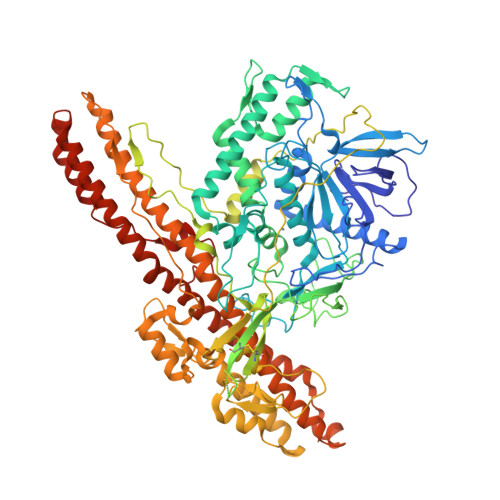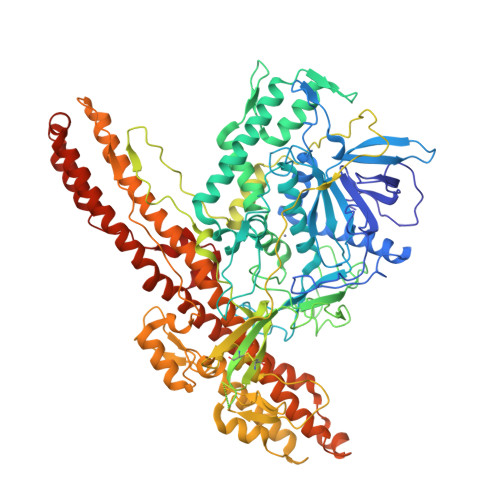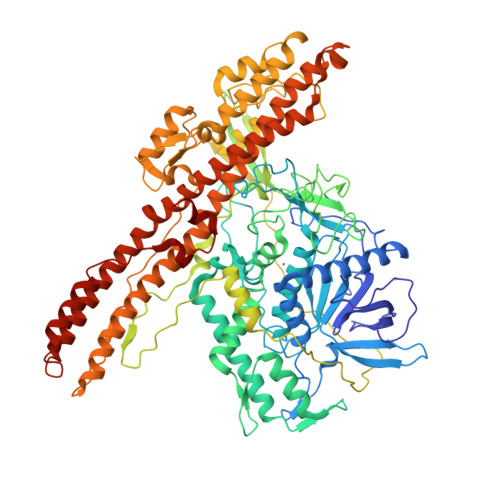Structures of Engineered Clostridium Botulinum Neurotoxin Derivatives
Masuyer, G., Stancombe, P., Chaddock, J.A., Acharya, K.R.(2011) Acta Crystallogr Sect F Struct Biol Cryst Commun 67: 1466
- PubMed: 22139146
- DOI: https://doi.org/10.1107/S1744309111034671
- Primary Citation of Related Structures:
3ZUQ, 3ZUR, 3ZUS - PubMed Abstract:
Targeted secretion inhibitors (TSIs) are a new class of engineered biopharmaceutical molecules derived from the botulinum neurotoxins (BoNTs). They consist of the metalloprotease light chain (LC) and translocation domain (Hn) of BoNT; they thus lack the native toxicity towards motor neurons but are able to target soluble N-ethylmaleimide-sensitive fusion protein attachment receptor (SNARE) proteins. These functional fragment (LHn) derivatives are expressed as single-chain proteins and require post-translational activation into di-chain molecules for function. A range of BoNT derivatives have been produced to demonstrate the successful use of engineered SNARE substrate peptides at the LC-Hn interface that gives these molecules self-activating capabilities. Alternatively, recognition sites for specific exoproteases can be engineered to allow controlled activation. Here, the crystal structures of three LHn derivatives are reported between 2.7 and 3.0 Å resolution. Two of these molecules are derivatives of serotype A that contain a SNARE peptide. Additionally, a third structure corresponds to LHn serotype B that includes peptide linkers at the exoprotease activation site. In all three cases the added engineered segments could not be modelled owing to disorder. However, these structures highlight the strong interactions holding the LHn fold together despite the inclusion of significant polypeptide sequences at the LC-Hn interface.
Organizational Affiliation:
Department of Biology and Biochemistry, University of Bath, Claverton Down, Bath, England.




















